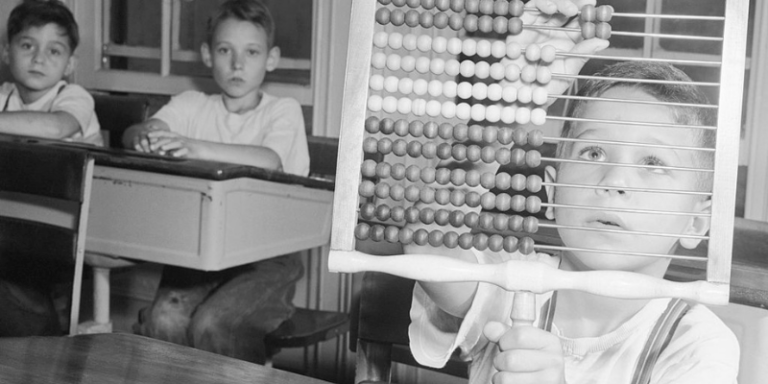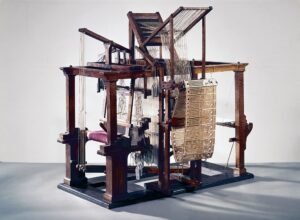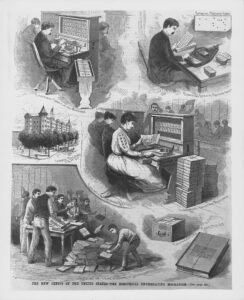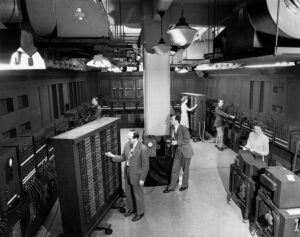The Birth of Computers
From a small desk ornament to today’s computers, technology has come a long way.
By: Kelli Ballard | July 28, 2021 | 681 Words

(Getty Images)
Computers, in some shape or form, have been around probably longer than one might guess, although the earliest ancient versions differed greatly from what we have today. The first known type of computer dates all the way back to 1100 B.C. and, remarkably, is still in use today. It is called the abacus, and it is a small rectangular frame with beads hanging from it. Mostly used in Asia, it provides a variety of mathematical solving techniques.

(Photo by SSPL/Getty Images)
The first calculator was invented in 1623 by the German astronomer and mathematician Wilhelm Schickard. He called it a calculating clock, but the prototype was destroyed in a fire. Luckily, letters he had written to a friend describing his invention made it possible to recreate it. However, some give credit to Leonardo da Vinci for his sketched plans for a working calculator nearly a century earlier.
In 1801, in France, Joseph Marie Jacquard invented a loom that used punched wooden cards that would automatically weave fabric designs. This punch card system would become the foundation for the earliest computers. By 1880, the population had grown so much that it took seven years to complete taking the census. The government was growing desperate to try and find an easier and quicker way. In 1890, Herman Hollerith designed a punch card system to help calculate the census and it reduced the calculation time down to just three years, saving the government $5 million. He then established the company that would later become IBM.

(Photo by American Stock Archive/Archive Photos/Getty Images)
Interesting enough, a female was the first programmer. Augusta Ada King, the countess of Lovelace, was the daughter of the famous poet Lord Byron. Her mother, Anne Milbanke, was mathematically inclined. As Britannica points out, she “went on to become the world’s only expert on the process of sequencing instructions on the punched cards that the Analytical Engine used; that is, she became the world’s first computer programmer.”
In 1939, David Packard and Bill Hewlett founded Hewlett-Packard in Palo Alto, California – in a garage. And then, the “grandfather” of digital computers was built between 1943 and 1944 by John Mauchly and J. Presper Eckert, two University of Pennsylvania professors. They built the Electronic Numerical Integrator and Calculator (ENIAC). It was so huge it filled a 20-foot by 40-foot room and used 18,000 vacuum tubes. In 1946, the ENIAC became the first computer for government and business. However, it would still be quite a while before the internet was born. Sir Tim Berners-Lee, a British computer scientist, wanted to find a better way to collect information. He said:

ENIAC (Getty Images)
“In those days, there was different information on different computers, but you had to log on to different computers to get at it. Also, sometimes you had to learn a different program on each computer. Often it was just easier to go and ask people when they were having coffee …”
In March 1989, Berners-Lee pitched his idea, “Information Management: A Proposal,” which would eventually become the internet. His boss did not accept it at the time, but he did allow him to work on the project. By October 1990, he had written the three fundamental technologies used today:
- HTML: HyperText Markup Language. This allows for formatting websites.
- URI: Uniform Resource Identifier. This is also known as the URL or the address of a website.
- HTTP: Hypertext Transfer Protocol, which allows the retrieval of linked resources across the World Wide Web.
By 1991, the public was invited to participate and join in the new web world.
We have come a long way since the first computer that took up the size of a full room – never mind the abacus! Our technology today is so advanced because of these pioneers that we are able to hold a full computer – a smartphone – in the palm of our hands. Today’s computer evolved over many inventions and improvements, but without the attempts and failures, such advancement wouldn’t be possible.
















